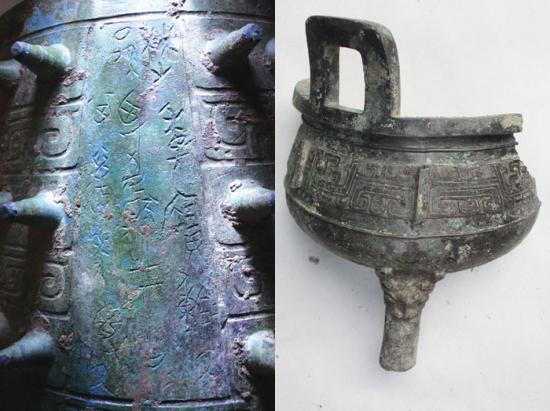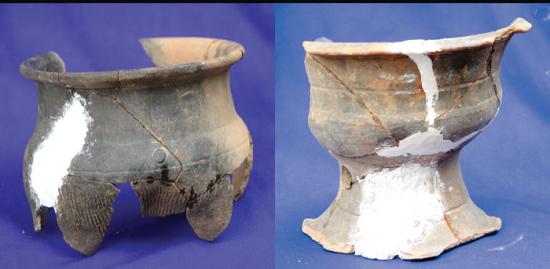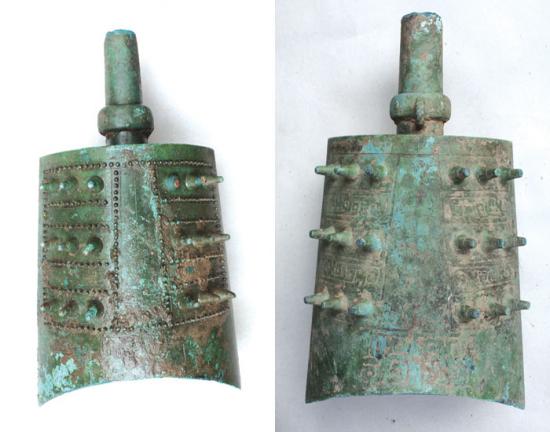Chinese Institute of Archaeology
Source - http://www.kaogu.cn/en/detail.asp?ProductID=3707
The Wanfunao site is located at the east suburb of Xiaoting district of Yichang city and the west of Baiyang Township in Zhijiang, Hubei province, in the north of Yidu city across the river. The site was found on a vast alluvial plain of the Yangtze River. In 5 m underground are sandy clay layers formed by river flooding before Zhou dynasties. Beneath the surface are depositions from Western Zhou period, which are comparatively simple.

On the afternoon 18th June, 2012 in a construction the site has been found. After investigation conducted by personnels from the Cultural Bureau and the Museum of Yichang city, a bronze tripod and ten bells as well as many pottery shards were unearthed. When the superficial layer was removed, archeologists then found and uncovered three ash pits dubbed H1, H2 and H3. The preliminary exploration in its south and north part reveals a Western Zhou site contemporary with the series bells.

From June to August, the west and the north part of the site have been surveyed, which was proved to be Chu state cultural remains from Western Zhou period. The site is in a irregular shape expanding from northwest to southeast, covering an area of 55,000 sq. meters. The cultural relics are randomly scattered and deposition layers are often up to 78 cm thick.
Three ash pits H1, H2, and H3, in different shapes and with different contents, have been disclosed. The H1 could be the provenance of bronze series bells and bronze tripods. The series bells fall into three different types according to their physical features and surface decorations. The bronze tripod is in large size, decorated with edges and phoenix pattern at the belly. The ceramics from the three pits are undergoing repairs. The preliminary restored utensils include Li vessel, Gui container, Zun vessel, jars, urns and stemmed cups.

Ceramics collected from H1 and H2 demonstrate they were from the same period, i.e. the Western Zhou period. For example the Gui container resembles that found in Fengxi and Maojiazui sites; the Li vessel could be dated back to the even earlier period due to its high neck and small nipples attached on the shoulder. Features of Zun vessel also point to this period.

In the vicinity the Wanfunao site, the site of Eastern Zhou period has also been found nearby.
The bronze tripod, inscribed series bells and ceramics help to put the date of the site to middle and late Western Zhou period. It is a great discovery and academic breakthrough. The Zhijiang region where it is found was once the core territory of early Chu culture. The inscribed person’s names as “Chu Ji”, and “Gong”, the first found in southern China, provide important materials for studying the early Chu state history. The new find fills the missing link of early Chu culture, and will exert far-reaching influence for future’s researches. (Translator: Tong Tao)